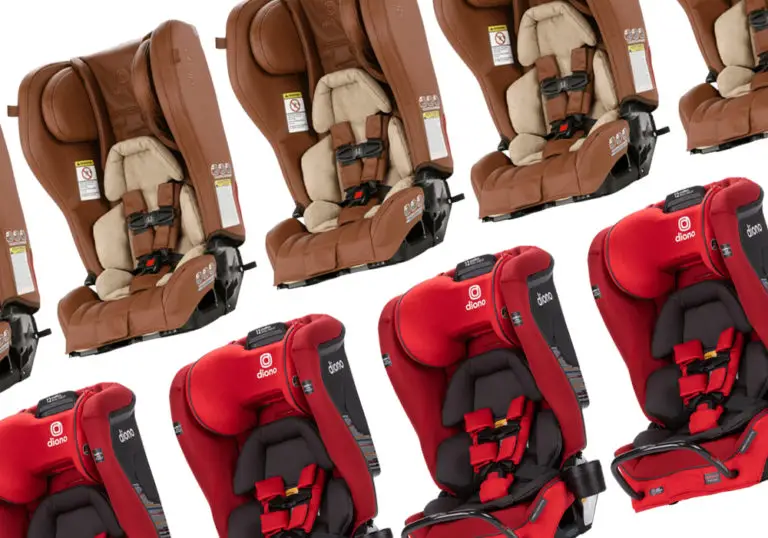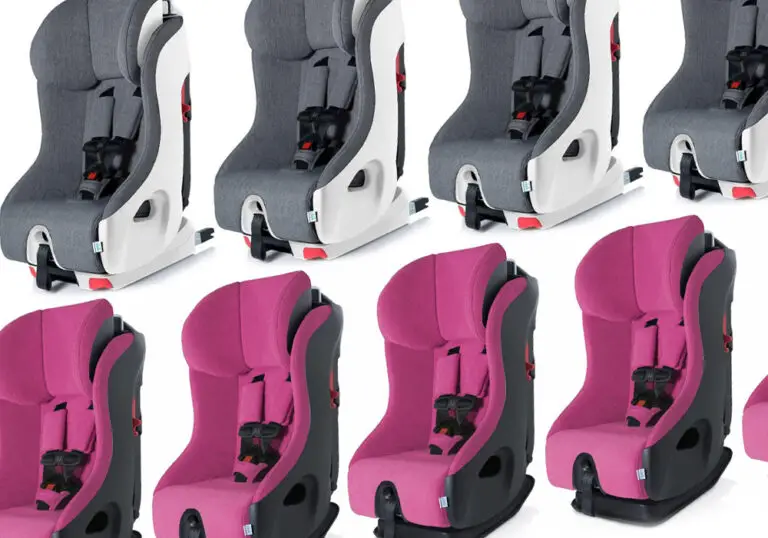Minnesota Car Seat Laws 2024 (Rear, Forward & Booster)

Under the Minnesota car seat laws, a motor vehicle operator has to ensure that a child passenger under 8 years of age and shorter than 4 feet and 9 inches is placed in a child restraint system.
The system must meet applicable federal motor vehicle safety standards and be installed according to the manufacturer’s instructions.
Disclaimer: This content does not constitute legal advice. It is solely for informational purposes. Always check the original source of the law for the latest version.
- MN Rear-Facing Seat Law
- MN Forward-Facing Seat Law
- MN Booster Seat Law
- MN Child Front Seat Law
- MN Child Seat Belt Law
- MN Taxi Child Seat Law
- MN Ridesharing Seat Law
- MN Child Seat Repl. Law
- Leaving Child in Car in MN
- Choosing a Child Seat in MN
- Seat Installation Help in MN
Minnesota Car Seat Laws
Minnesota Rear-Facing Car Seat Law
There is no rear-facing car seat law in Minnesota. The Minnesota state law states that a child under 8 years of age and below the height of 4 feet 9 inches must be restrained in an appropriate child passenger safety system. (1) The Minnesota Office of Traffic Safety recommends keeping your child rear-facing as long as possible. (2)
Since there is no definite Minnesota rear-facing child seat law, it is best to follow the recommendations of the American Academy of Pediatrics (AAP).
The rear-facing car seat age in Minnesota is not mentioned in the law. But children should ride in an infant rear-facing seat until the age of 2 years. It must never be placed in front of an active airbag.
A violation of the provision carries a fine of maximum $50.
Age: Under 8 years
Height: Shorter than 4’9”
Penalty: Maximum $50
Minnesota Forward-Facing Car Seat Law
There is no forward-facing car seat law in Minnesota. Under the car seat laws in Minnesota, all children younger than 8 years and shorter than 4’9” must be placed in a federally approved child restraint system unless they are medically exempt. (1)
In the absence of a Minnesota forward-facing child seat law, you can refer to the Office of Traffic Safety. It recommends keeping children in a forward-facing seat once they outgrow the maximum height and weight limits of their rear-facing seats. (2)
The forward-facing car seat age in Minnesota is not stated in the law. But children should ride forward-facing with a harness and tether after they turn 2 years old. They can continue riding in the forward-facing seat till they reach their maximum limits.
The driver will be penalized a maximum of $50 for violating the law.
Age: Under 8 years
Height: Shorter than 4’9”
Penalty: Maximum $50
Minnesota Booster Seat Law
There is no specific child booster seat law in Minnesota. But the car seat law requires children younger than 8 years and shorter than 4’9” to be placed in a child restraint system. (1)
Once they outgrow the height and weight limits of their forward-facing seats, they can move to a booster seat. It can include a high-back or a backless booster seat.
This does not apply if the child is medically unfit to be restrained in a child safety system.
Though the booster seat age in Minnesota is not stated, the Office of Traffic Safety Minnesota booster seat requirements recommend that children stay in them until they are 4’9” or at least 8 years old, whichever comes first. (2)
Any violation of the above child seat requirements in Minnesota carries a fine of a maximum of $50.
Age: Under 8 years
Height: Shorter than 4’9”
Penalty: Maximum $50
Minnesota Child Front Seat Law
There is no child front seat law in Minnesota. However, the Minnesota Department of Public Safety recommends keeping children in the backseat till they are at least 13 years old. This is in tune with the recommendations of the AAP.
However, if you are carrying your child in the front seat, then they must be placed in a child passenger safety system that is appropriate for their height and weight requirements. In the case of a rear-facing seat, the passenger-side airbag must be deactivated.
For a forward-facing and booster seat, the vehicle seat must be pushed as far away from the dashboard as possible.
While the front seat age in Minnesota is not mentioned, it is best to follow the guidelines of the AAP and the Department of Public Safety.
Age: 13 years and older (recommended)
Minnesota Child Seat Belt Law
According to the child seat belt law in Minnesota, children who are at least 8 years old or at least 4’9” tall can wear an adult safety belt. (1) These requirements must be followed whether they are seated in the front seat or the backseat.
Minnesota children’s seat belt law does not apply when all seating positions with seat belts are occupied, or a person is medically unfit to wear a seatbelt and has a certificate from a licensed physician to that effect, or when driving or riding in passenger vehicles manufactured before January 1, 1965. (3)
Violating the seat belt rules in Minnesota carries a fine. A passenger 15 years or older who is not wearing a seat belt will be directly fined $25. For passengers younger than 15 years, the driver will be fined $25.
Age: 8+ years
Height: 4’9” or taller
Penalty: $25
Minnesota Taxi Child Seat Law
According to the taxi child seat law in Minnesota, taxis are exempt from Minnesota child seat laws. Under the law, a child passenger younger than 8 years or shorter than 4’9” must be in a federally approved car seat. (1) However, the taxi driver is not responsible for providing a taxi child seat in Minnesota.
As parents and caregivers, it is best if you arrange an appropriate car seat before traveling with your child in a taxi. Depending on the child’s height, you can select a rear-facing, forward-facing, or booster car seat.
When installing the car seat in a taxi, it is your responsibility as a caregiver to ensure that it is securely fixed. You can refer to the car seat manual for proper installation.
Minnesota Ridesharing Child Seat Law
There is no clear ridesharing child seat law in Minnesota. As per Minnesota car seat regulations, the operator of the vehicle is responsible for ensuring that children younger than 8 years or shorter than 4’9” are secured in a car seat. (1)
However, the law does not specify who should provide a child seat. Nor does it specify if it applies to ridesharing services such as Uber and Lyft.
In such a case, either the parents/caregivers or the driver should provide a child passenger safety system. For infants, it includes a rear-facing car seat.
For toddlers and young children under 8 years and shorter than 4’9”, a forward-facing car seat or a booster seat is required. Children taller than 4’9” or older than 8 years can wear the adult seat belt.
Minnesota Child Seat Replacement Law
There is no specific child seat replacement law in Minnesota. But if your car is involved in a moderate or severe accident in Minnesota, you must replace the child safety seat.
The car seat or booster seat that has been involved in a crash may have defects not visible to the eye. Therefore, it is important to replace them after a moderate or severe crash.
However, if your vehicle suffered a low-impact accident, there is no need to automatically replace the car seat. A low-impact crash is one that satisfies all five conditions prescribed by the NHTSA.
The Minnesota Department of Public Safety recommends child seat replacement after an accident, after its recall or if it is more than 6 years old. You should check the seat label for more information.
Leaving Child in The Car in Minnesota
There is no law on leaving a child in a vehicle in Minnesota. But there are many risks associated with leaving a child unattended in a vehicle. The most common danger is heat stroke.
The temperature inside the vehicle can rise rapidly. Since children’s bodies heat up faster than adults, they are at great risk of suffering a heat stroke. Other dangers include the child getting kidnapped, setting the car in motion, getting strangled by seat belts or power windows, or having some other in-car accident.
Even though leaving a child in the car in Minnesota is not technically illegal, it may be covered under other serious provisions of child endangerment. Thus, never leave a child alone in a vehicle, even for a few minutes.
Choosing a Child Car Seat in Minnesota
When choosing a car seat in Minnesota, you can follow the recommendations of the National Highway Traffic Safety Administration (NHTSA).
From the time your child is born till they turn at least 2 years old, a rear-facing car seat is the best car seat to use in Minnesota. They can then move to a forward-facing seat with a harness.
They should ride in them till they reach the maximum height and weight limits of the seat, as prescribed by the manufacturer.
After they outgrow these, they should use booster seats. A high-back or backless seat is the best booster seat to use in Minnesota.
Car Seat Installation Help in Minnesota
Child passenger safety seats in Minnesota must be installed as per the manufacturer’s instructions. Installing a car seat can be a tedious task. The seat must be secured perfectly to ensure the safety of your child.
To help you with car seat installation, Minnesota has different stations with certified Child Passenger Safety (CPS) technicians. You can get your car seat checked or installed and also learn more about child passenger safety. Some of the stations where you can get assistance are:
- Burnsville Police Department
- Eagan Police Department
- Woodbury Public Safety
- Regions Hospital, Maplewood
- White Bear Lake
- Prior Lake Police Department
- Apple Valley Police Department
Minnesota Car Seat Safety Resources
Some state-specific resources that provide more information about car seat safety include:
- Minnesota Safety Council: It is a private, member-based non-profit that works to prevent unintentional injuries. It conducts traffic programs, classes, and seminars for the workplace and larger community.
- South Central Minnesota EMS Service: This system works 24/7 to coordinate emergency medical services across the state.
- Toward Zero Deaths Minnesota: It is Minnesota’s traffic safety program. It incorporates an interdisciplinary approach to reduce traffic accidents, injuries, and deaths.
- Carver County Minnesota: The official website of Carver County, its Public Health department manages various programs to promote the health and well-being of its residents.
- Public Health Division, Blue Earth County
FAQ
How long should a child ride in a rear-facing car seat in Minnesota?
The law does not expressly state an age. But it is recommended that a child ride in a rear-facing car seat till the age of 2 years.
Can you put a rear-facing car seat in the front seat in Minnesota?
The law is silent. It is best to put a rear-facing car seat in the back. If you do put it in front, the front seat airbag must be deactivated.
Can you put a rear-facing car seat in the middle rear seat in Minnesota?
You can put a rear-facing car seat in the middle rear seat, but it must fit properly. Check the car seat as well as your vehicle’s manuals.
When can a baby face forward in a car seat in Minnesota?
There is no specific age. But a child can face forward after they have outgrown their rear-facing seat. This typically happens around 2 years of age.
How old for a booster seat in Minnesota?
There is no specific age mentioned in the law. But children should ride in a booster seat once they outgrow their forward-facing seat according to its manufacturing limits.
When to use a backless booster seat in Minnesota?
You can use a backless booster seat if your vehicle seat has a headrest and the child’s ears are not higher than the seat back.
When can a child sit in the front seat with a booster in Minnesota?
Children should ideally ride in the backseat till they are 13 years old. But if unavoidable, they can ride in the front seat with a booster with the seat pushed back.
When can a child stop using a booster seat in Minnesota?
A child can stop using a booster seat when they turn 8 years old or reach 4’9” in height, whichever occurs first. They can then start using the seatbelt.
When can a child sit in the front seat in Minnesota?
Children are safer in the backseat of the vehicle. But they can sit in the front seat in an appropriate child restraint if it is absolutely necessary.
When to switch from 5 point harness to a seat belt in Minnesota?
When the child outgrows the height and weight limits of the 5-point harness, they can switch to wearing a seat belt in a booster seat.
When can a child use a regular seat belt in Minnesota?
Under the law, a child can start using a regular seat belt once they are 8 years old or stand at least 4’9” tall (regardless of age).
Do you need a car seat in a taxi in Minnesota?
Taxis are not required to have a car seat. However, it is recommended that you carry an appropriate car seat for maximum protection for your child.
Do you need a car seat in a Uber in Minnesota?
The Minnesota law does not mention ridesharing services like Uber. But either the caregiver or the driver should provide a federally approved and appropriate car seat.
Do you need a car seat in a Lyft in Minnesota?
The law is not clear on this issue. But either the caregiver or the driver should provide an appropriate car seat to ensure the child’s safety.

Rishima Rawat
Rishima Rawat is a lawyer and legal writer with over six years of writing and legal experience. She earned her LLB degree from the West Bengal National University of Juridical Sciences, Kolkata. With a passion for child safety, she’s written extensively about the U.S. car seat laws in ParentingMode. She collaborates with businesses and law firms globally, enhancing their online content. Her insights are also published in legal journals like RGNUL, NLIU, and RMLNLU Law Review. Committed to the cause of education, she has volunteered with IDIA, which helps underprivileged children in India to access legal education. She has also worked with Enhelion Knowledge Ventures, a leading legal ed-tech platform in India that provides students with affordable courses in law. Fluent in English and Hindi with elementary proficiency in Spanish, Rishima combines her legal expertise with a dedication to child safety.






